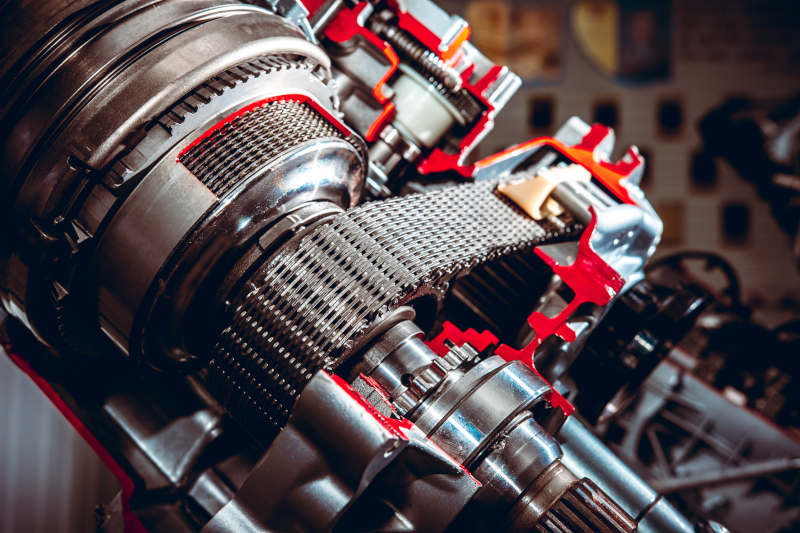Innovation is reshaping the way powertrain components are packaged, helping manufacturers improve efficiency, reduce costs, and enhance sustainability. 3D printing is emerging as a transformative solution for powertrain packaging, offering rapid prototyping, cost-effective customization, and significant waste reduction. This technology enables OEMs and suppliers to design, test, and produce packaging solutions that precisely fit complex engine components, transmissions, and battery modules, all with unmatched speed and accuracy.
As the automotive industry moves toward light weighting, electrification, and supply chain optimization, 3D printing for packaging components is an efficient and cost-effective way to support powertrain packaging. From enhancing protection for high-value powertrain parts to reducing material waste, 3D printing is reshaping the future of automotive packaging.
The Power of Rapid Prototyping in Powertrain Packaging
A significant advantage of 3D printing in powertrain packaging design is rapid prototyping. Traditionally, developing a new protective casing for an engine, transmission, or EV battery pack requires expensive, time-consuming mold production. Iterations are slow, making last-minute design changes costly.
With 3D printing, manufacturers can develop and test functional prototypes in hours instead of weeks, allowing for faster refinements and improved packaging performance.
This accelerated design process helps OEMs and suppliers reduce product development cycles, ensuring that powertrain components are shipped faster, safer, and more efficiently.
Iterative Design for Optimized Powertrain Protection
3D printing allows for continuous design improvements without the high costs of retooling. This iterative design approach ensures that powertrain packaging solutions are optimized for key factors such as:
- Structural Integrity: Ensuring packaging provides maximum protection against shocks, vibrations, and compression forces during shipping.
- Material Efficiency: Using the least amount of material necessary while maintaining durability to reduce both costs and environmental impact.
- Product Fit: Creating supports within packaging that perfectly match the dimensions of engines, transmissions, and battery modules, reducing unnecessary voids that can lead to shifting and damage.
- Weight Reduction: Designing lightweight yet strong packaging to decrease shipping costs and improve fuel efficiency in transport logistics.
By allowing on-demand refinements, 3D printing eliminates the need for expensive retooling and material waste, making powertrain packaging more adaptable and cost-efficient.
Cost-Effective Customization for Powertrain Components
Traditional powertrain packaging solutions often require large minimum order quantities due to the high cost of mold creation. This limitation makes customized packaging costly and impractical, especially for:
- Low-volume or prototype powertrain components
- Specialized packaging for electric and hybrid powertrains
- Customized engine shipping crates for aftermarket parts
3D printing eliminates these barriers by enabling on-demand, low-volume production, making it possible to tailor packaging solutions without excessive upfront costs.
For instance, an automotive supplier developing a next-generation hybrid transmission can quickly modify packaging inserts to accommodate unique shapes and delicate electronic components. This flexibility is crucial for meeting evolving design specifications and production demands without being locked into expensive, rigid packaging solutions.
Future Trends in 3D-Printed Powertrain Packaging
As 3D printing technology advances, several innovations are shaping the future of powertrain packaging:
1. Multi-Material Printing for Enhanced Protection
The ability to print with multiple materials in a single process will lead to hybrid packaging solutions featuring rigid exteriors for structural support and soft cushioning layers for impact absorption, which is ideal for delicate EV powertrain components.
2. Smart Packaging with Embedded Sensors
3D printing enables the incorporation of embedded RFID tags, QR codes, and tracking sensors to monitor powertrain shipments in real-time. These features improve supply chain visibility and ensure that critical powertrain components remain secure during transport.
3. Temperature-Controlled Packaging for EV Powertrains
New 3D-printed packaging materials with phase-change technology will help regulate temperature fluctuations, protecting high-voltage battery packs from extreme heat or cold during transit.
4. AI-Optimized Packaging Designs
AI-driven software is being integrated into 3D printing processes to automatically optimize packaging designs for strength, weight, and material efficiency. This will further reduce waste and production costs for automotive suppliers.
These trends will continue to redefine how powertrain components are packaged, shipped, and protected, making 3D printing a vital technology for the future of automotive logistics.
The Future of Powertrain Packaging is 3D Printed
3D printing is revolutionizing powertrain packaging by offering rapid prototyping, cost-effective customization, and sustainable production methods. From enhanced protection for high-value components to reduced material waste and streamlined logistics, this technology is reshaping how automotive manufacturers approach packaging design.
As automakers and suppliers embrace 3D printing, they will gain greater flexibility, lower costs, and improved environmental sustainability, all while ensuring their powertrain components arrive safely and efficiently at their destination.
Is 3D-printed powertrain packaging the right solution for your business?
If you’re looking for customized, efficient, and sustainable packaging solutions, exploring 3D printing for powertrain packaging could be the next step in transforming your logistics strategy.
SPG specializes in innovative, custom packaging design and has experience working with manufacturers across several industry sectors. Learn more about our services and contact us.

